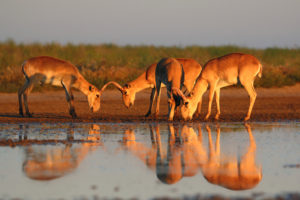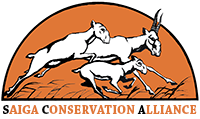Author: Molly Grace
Imagine this scenario: A species is teetering on the brink of extinction. In fact, it has been classified on the IUCN Red List of Threatened Species (the global standard for measuring extinction risk) as Critically Endangered. You rally a global team of scientists, conservation planners, and land managers to put their heads together and figure out how to save this species. This team works relentlessly to bring this species back from the edge, and little by little, the species improves. After years, or even decades, of work, the team achieves its goal— the species is no longer considered threatened with a risk of extinction! However, no one is celebrating—in fact, the mood has become decidedly sombre.
 There is a simple reason for this apparent paradox: due to limited conservation budgets, species which are classified as threatened with extinction are preferentially awarded funding. While this makes sense at a wide scale—of course we should be working hardest to save the species which face an imminent risk of vanishing from the planet—it poses a problem for species who have benefitted from concerted conservation actions and are no longer in the “danger zone.” Once the threatened classification vanishes, often so does funding. Without continued protections, species may slip back into the threatened category, nullifying the effect of decades of work. Thus, there is a perverse incentive to stay in the exclusive “highly endangered” club—at least on paper. But this prevents us from celebrating the huge difference that conservation can make.
There is a simple reason for this apparent paradox: due to limited conservation budgets, species which are classified as threatened with extinction are preferentially awarded funding. While this makes sense at a wide scale—of course we should be working hardest to save the species which face an imminent risk of vanishing from the planet—it poses a problem for species who have benefitted from concerted conservation actions and are no longer in the “danger zone.” Once the threatened classification vanishes, often so does funding. Without continued protections, species may slip back into the threatened category, nullifying the effect of decades of work. Thus, there is a perverse incentive to stay in the exclusive “highly endangered” club—at least on paper. But this prevents us from celebrating the huge difference that conservation can make.
With the creation of the IUCN Green List of Species, we hope to reverse this perverse incentive to downplay conservation success. The Green List, still in development, will assess species recovery and how conservation actions have contributed to species recovery. It will also calculate the dependence of the species on continued conservation by estimating what would happen if conservations stopped. This can be used as an argument for continued conservation funding. With the Green List working in tandem, we can stop thinking of Red List “downlisting”—moving from a high category of extinction risk to a lower one—as a demotion which disincentivises funding, but rather see it for what it truly is: a promotion which should be celebrated!
 Take, for example, our beloved charismatic saiga antelope, it is currently considered “Critically Endangered” on the Red List. However, the Green List assessment shows that in the absence of past conservation efforts, many more populations would be extinct or in worse shape today. The Green List team shows that with continued conservation, the saiga’s future prospects are bright—a low risk of extinction, reestablishment of populations where they are locally extinct, and some functional populations.
Take, for example, our beloved charismatic saiga antelope, it is currently considered “Critically Endangered” on the Red List. However, the Green List assessment shows that in the absence of past conservation efforts, many more populations would be extinct or in worse shape today. The Green List team shows that with continued conservation, the saiga’s future prospects are bright—a low risk of extinction, reestablishment of populations where they are locally extinct, and some functional populations.
The IUCN Species Conservation Success Task Force, which is charge of the Green List of Species, is currently hard at work to develop a framework for measuring recovery which is applicable across all forms of life on the planet: aquatic and terrestrial species, plant, animal, and fungal species, narrow endemics to wide-ranging species—you name it! If the Green List sparks optimism within you and you’d like to get involved in the process, you can contact our team or learn more here. Read a paper published today (26th March 2018) which discusses the topic here
